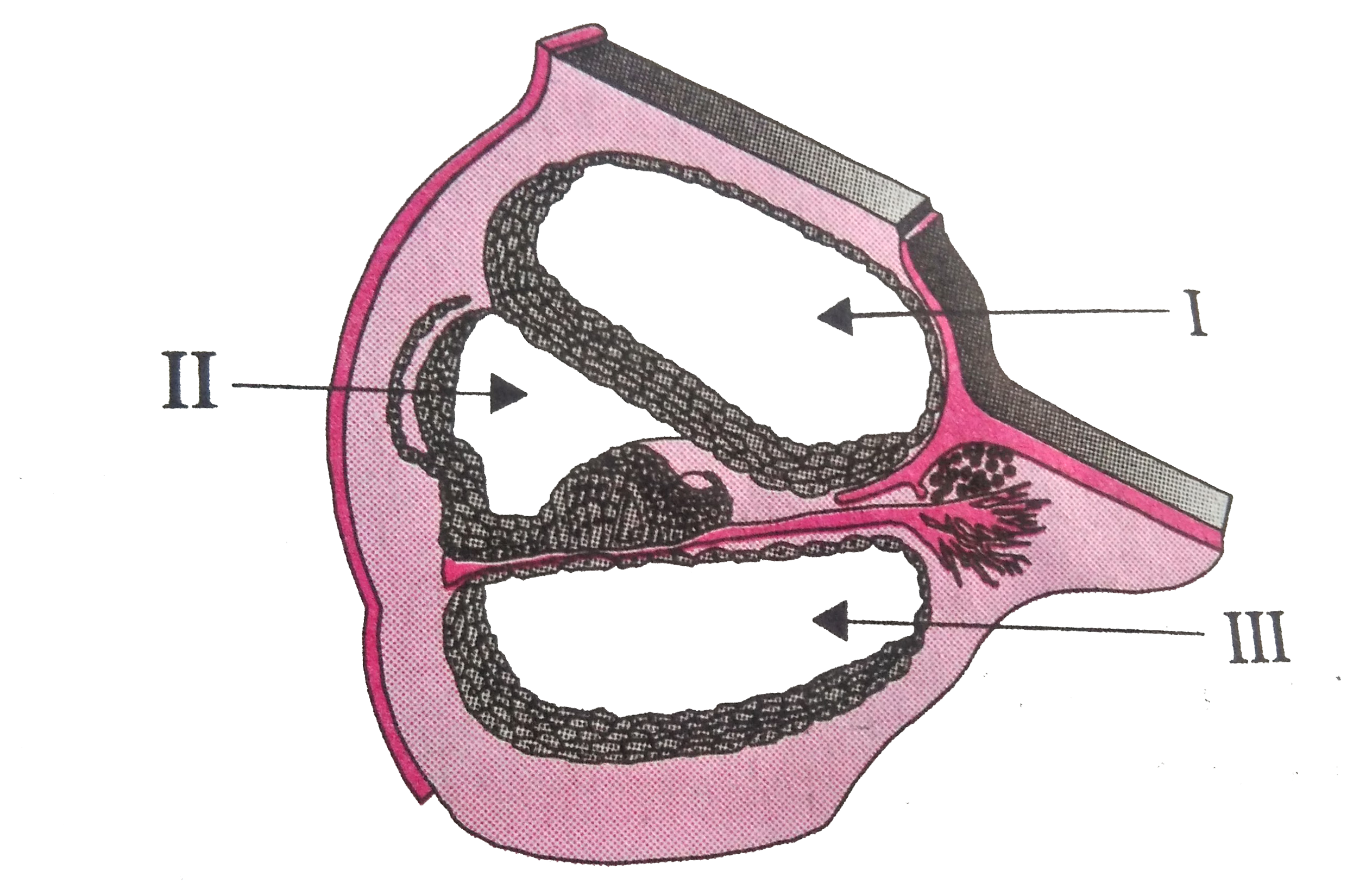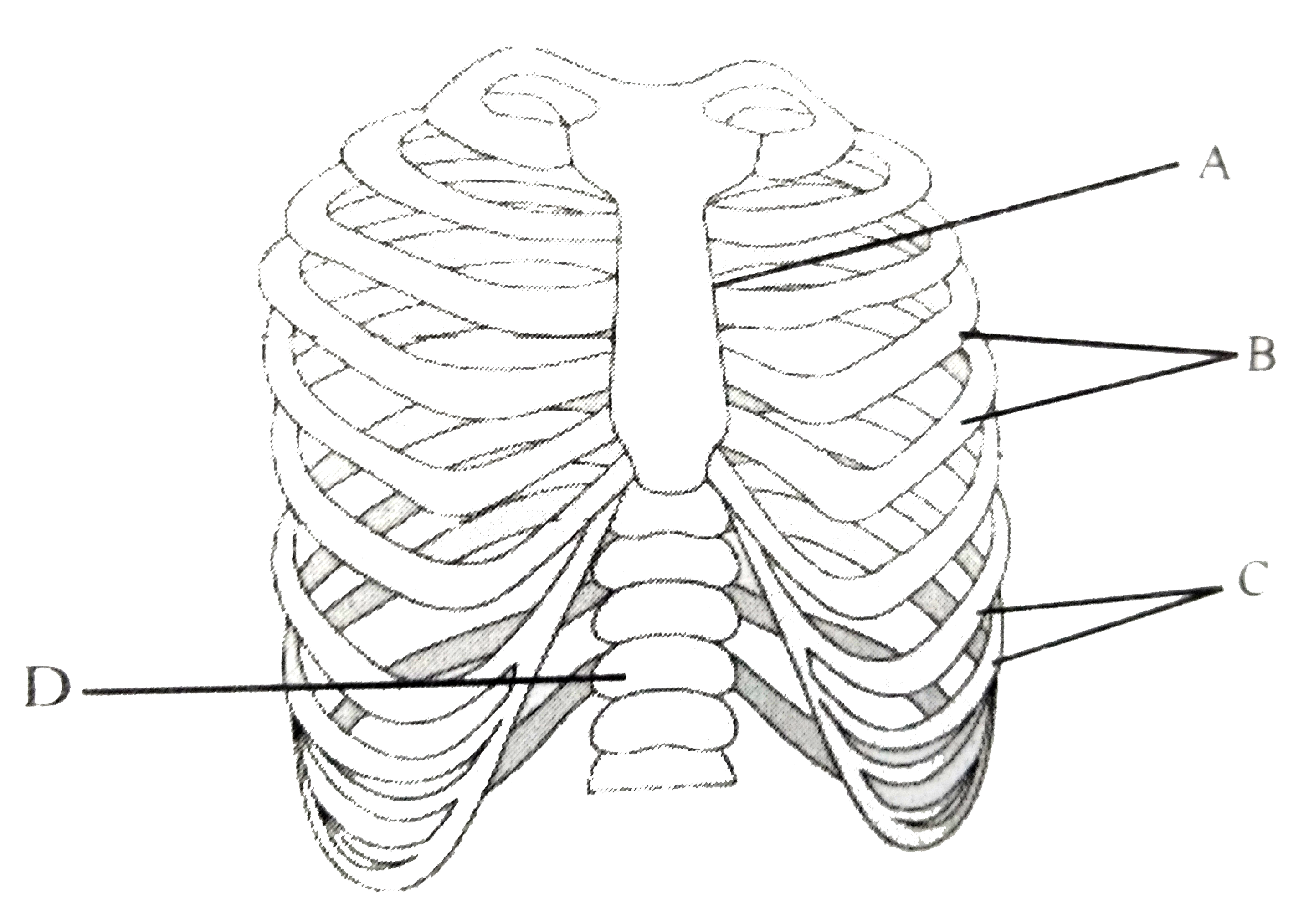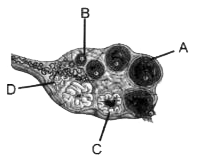The figure below depicts the Chlor alkali process.

Select the row containing correct identification of the products labelled as I, II and III and their use.

Text Solution
In chlor-alkali process, when electricity is passed through an aqueous solution of sodium chloride or brine, it decomposes to form sodium hydroxide,
2NaCl(aq)+2H2O(l)→2NaOH(Aq)+Cl2(g)+H2(g)
Chlorine gas is given off at the anode, and hydrogen gas at the cathode and sodium hydroxide solution is formed near the cathode
|
Similar Questions
Knowledge Check
Select the correct identification group of labelled part I, II, III
 AI-Scala vestibuli, II-Scala media, III-Scala tympaniBI- Scala vestibuli, II- Scala typmpani, III - Scala mediaCI- Scala tympani, II- Scala media, III - Scala vestibuleDI- Scala media, II- Scala tympani, III - Scala vestibuli
AI-Scala vestibuli, II-Scala media, III-Scala tympaniBI- Scala vestibuli, II- Scala typmpani, III - Scala mediaCI- Scala tympani, II- Scala media, III - Scala vestibuleDI- Scala media, II- Scala tympani, III - Scala vestibuliSelect the correct identification group of labelled parts I,II,III
 AI-Scala vestibuli, II-Scala media, III-Scala tympaniBI-Scala vestibuli,II-Scala tympani, III-Scla mediaCI-Scala Tympani, II-Scala media, III-Scala media II-Scla tympani, III-Scala vestibuli.DI-Scala media II-Scala tympani,III-Scala vestibuli.
AI-Scala vestibuli, II-Scala media, III-Scala tympaniBI-Scala vestibuli,II-Scala tympani, III-Scla mediaCI-Scala Tympani, II-Scala media, III-Scala media II-Scla tympani, III-Scala vestibuli.DI-Scala media II-Scala tympani,III-Scala vestibuli.The figures below shows 3 phases of mitosis select the option giving correct identification together with the correct event ?
 AC-Telophase-Nuclear envelope assembles around the chromosome clusters.BB-Anaphase-Segregation of homologous chromosomes.CA-Prophase-Chromosomes get fully condensedDC-Metaphase-Condensation of chromatin to from chromosome.
AC-Telophase-Nuclear envelope assembles around the chromosome clusters.BB-Anaphase-Segregation of homologous chromosomes.CA-Prophase-Chromosomes get fully condensedDC-Metaphase-Condensation of chromatin to from chromosome.
The figure shows ribs and rib cage labelled with A,B,C and D. select the option which gives correct identification :−

View SolutionThe figure below shows development of follicles (A, B, C, D). Select the option giving correct identification together with its function?

View SolutionThe figure shows ribs and rib cage labelled with A,B,C and D. select the option which gives correct identification :−

View SolutionGiven figure depicts the light harvesting comples (LHC) of photosystem I (PS I)

Select the correct identification for A,B,C and D
View SolutionGiven figure depicts the light harvesting comples (LHC) of photosystem I (PS I)

Select the correct identification for A,B,C and D
View Solution

